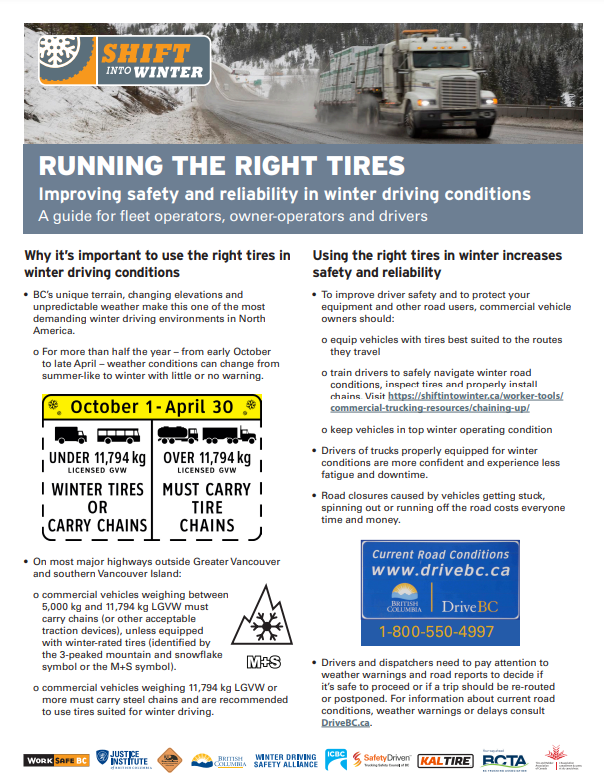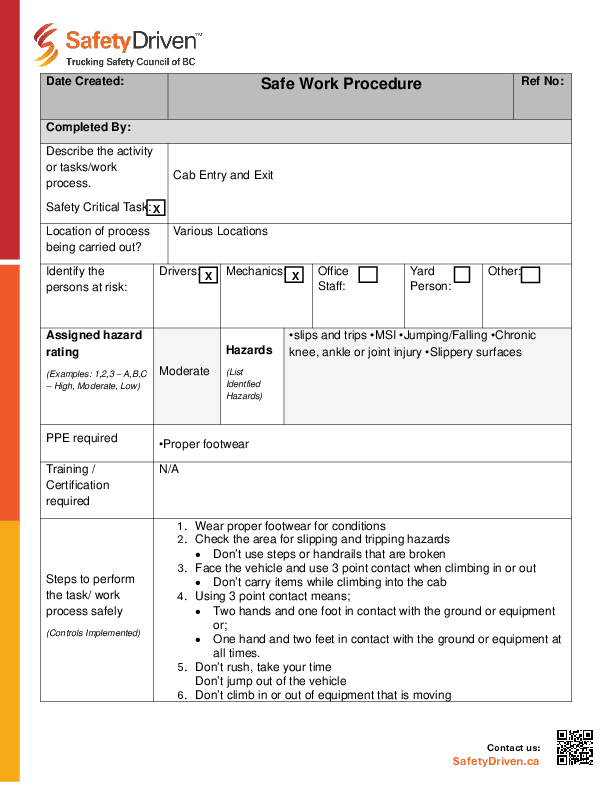
Commercial truck drivers can support BC’s initiatives to protect road users and wildlife.
Kudos to the Wildlife Program of the British Columbia Ministry of Transportation and Infrastructure for making highways safer for humans and animals. The ministry has tasked their wildlife biologists to find ways to prevent the 5,700 wildlife-vehicle collisions that typically happen on provincial highways each year. Their solutions include:
● More than 500 km of wildlife exclusion fencing
● 4 wildlife overpasses
● 29 large wildlife underpasses
● More than 70 small underpasses
● Approximately 1,200 species-specific wildlife warning signs, the most comprehensive inventory of wildlife warning signs in the world
● Wildlife detection systems, an innovative new approach that uses radar and thermal imaging to activate LED signs when animals are close to the road
The Wildlife Program has released a video that shows the number of mule deer crossings per day of Highway 97C in 2019. The area between Aspen Grove and Kelowna is prime mule deer habitat and has 11 underpasses and one overpass. This is the first time anywhere that wildlife crossing data has been presented on such a large scale. It shows 3,700 mule deer crossed safely.
As noted by Dr. Leonard Sielecki, manager of the Wildlife Program, “this is only showing mule deer – not other types of deer, or other species of wildlife. It means the potential for 3,700 collisions with vehicles was eliminated.”
See Wildlife Mitigation for more information and many photos of animals using their safety pathways.
Best Practices for commercial drivers in wildlife country
Bear, lynx, deer, elk, moose, mountain goats—they’re all out there. Most commercial drivers have experienced a close call with wildlife. Even a minor collision can be emotionally upsetting and require a new bumper, grill, or radiator.
It’s not true that wildlife-vehicle collisions are unavoidable; you can reduce the risk. The key is strategies for preventing accidents that can be fatal to humans as well as animals.
Even a minor collision can be emotionally upsetting — not to mention the need for a new bumper, grill, or radiator.
Here are some best practices for commercial drivers in wildlife country.
● Slow down and drive to conditions.
● Watch for wildlife warning signs.
● If you see one animal, scan for others as far as possible down the road and watch for slight movement.
● Stay focused and alert. Be ready to take appropriate steps if you see an animal.
● Have a plan for your likely course of action so you are not forced to make a snap decision.
● If a collision is imminent, look at the path you want to take, not the animal. Your vehicle will go where you are looking (e.g., toward a ditch, flat area, or embankment).
Look at it from the animal’s perspective.
● Young animals with no “street-smarts” may suddenly dart onto a roadway.
● Wildlife is more likely to travel on clear or slightly overcast nights, and at dawn and dusk when drivers’ vision can be affected by sun glare or reduced light.
● Animals are attracted to roadsides with greenery and streams.
● Animals may try to cross highways near stands of trees where they feel sheltered from predators.
● Male deer, elk, and moose may charge vehicles during mating season (September through November).
If you do have a collision with wildlife, call the BC SPCA at 1-855-622-7722 between 8:00 am and 6:00 pm, seven days a week. For an animal emergency outside those hours, contact the local police or RCMP.
Watch this webinar on demand at Road Safety at Work for more about Preventing Collisions With Wildlife.
Latest Resources
Running the Right Tires
Road Safety at WorkUse this guide for fleet operators, owner-operators, and drivers to help improve safe ...
Safe Work Procedure: Cab Entry & Exit
An Employer can make use of a safe work procedure (SWP) by training new and existing ...

